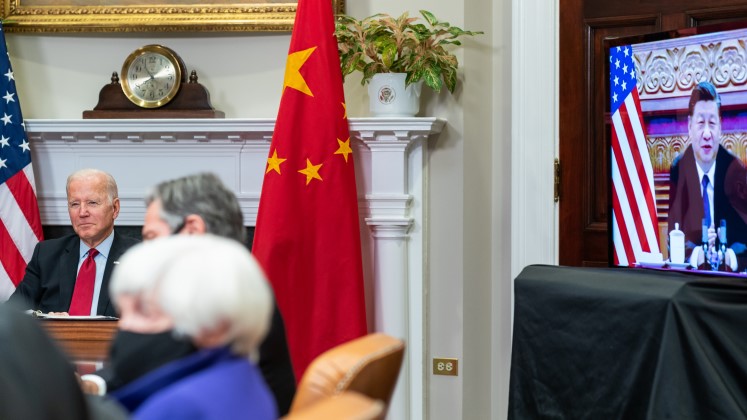 We all know the BRIC countries, but what about the MINTs? In this book economist Jim O’Neill considers how by 2050 Mexico, Indonesia, Nigeria and Turkey could collectively account for around 10% of world GDP. The changes described in this book are game changers: not only will they affect the lives of almost everybody alive between now and 2050, they will lead to unstoppable momentum for changes to be made to the arc of global economic and financial governance, which in its current form, would still be recognizable to the post-1945 generation. This book is a catalyst for each of these debates, and is to be warmly and enthusiastically welcomed, writes Richard Jones.
We all know the BRIC countries, but what about the MINTs? In this book economist Jim O’Neill considers how by 2050 Mexico, Indonesia, Nigeria and Turkey could collectively account for around 10% of world GDP. The changes described in this book are game changers: not only will they affect the lives of almost everybody alive between now and 2050, they will lead to unstoppable momentum for changes to be made to the arc of global economic and financial governance, which in its current form, would still be recognizable to the post-1945 generation. This book is a catalyst for each of these debates, and is to be warmly and enthusiastically welcomed, writes Richard Jones.
 The BRIC Road to Growth. Jim O’Neill. London Publishing Partnership. November 2013.
The BRIC Road to Growth. Jim O’Neill. London Publishing Partnership. November 2013.
Jim O’Neill is best known for coining the concept of the BRIC economies back in 2001. Few concepts have had greater impact on the analysis and explanation of the shifting focus of the global economy in the last decade, but as becomes clear in this excellent and very readable new book, this framework continues to develop. This development comes in two forms: the next stage of evolution for the BRICs themselves; and also a new group of countries, the MINTs.
The best way of understanding how the BRIC analysis has developed is to focus on China. Such is China’s rate of growth, it has recently been creating the economic equivalent of a new Greece every thirteen weeks. There remains a sense that stakeholders – including some in the BRICs – haven’t internalised the scale of this change, as seen by the mismatch in the media and policy focus on the challenges of the Greek economy since 2008, and not the ballooning opportunities to be found in the Chinese economy.
O’Neill explains how the twelfth Five-Year Plan was published in China in 2011, which set out the policy priorities for this decade. Chief amongst these is the aim of doubling the size of the economy (and by extension, the wealth of Chinese citizens) by 2020. The ‘quality’ of this growth is likely to prove almost as important in fulfilling the plan as the absolute amount of growth: wage growth is needed (particularly amongst the lowest income groups) to underpin increased domestic consumption, and also to lessen income inequality. It is hoped that much of this transition will be based on the shift from lower value manufacturing to higher value-added processes in the innovation-driven parts of the economy. The idea is that the six million people leaving China’s universities every year constitute a serious and plausible workforce for jobs requiring these higher order skills, but for this model to work, it is likely that a different approach to intellectual property will be needed. The discussion on this is an example of where the author’s experience in assessing this type of issue – from both writing about the BRICs, but also working at a very senior level in the financial markets – really adds value of its own to the book.

This book is likely to receive the most attention for its introduction of the ‘MINT’ concept. Whilst not threatening to outperform any individual BRIC economy, by 2050 ‘collectively, Mexico, Indonesia, Nigeria and Turkey could account for around 10% of world GDP, close to the size of the euro area. While there is no natural economic affinity between these four countries, as they grow there is exciting potential for them, and for other countries with clear historical or geographical links to them’ (p. 32). One commonality across the MINTs is the degree of rapid urbanization that is underway, and expected to continue in the coming decades. This underlines the importance of urban areas and urban growth in this type of economic expansion, and tracks a renewed interest in the role and growth of cities in understanding the British Industrial Revolution.
Out of these four countries, Mexico had perhaps the strongest claim to being a ‘BRIC’ in 2001 with similar GDP and strong demographics, but weaker economic performance during the 2000s. Mexico exhibits some strong macroeconomic indicators: comparatively low and stable inflation, and solid public finances. Mexico’s debt-to-GDP ratio of 40% and a cyclically adjusted deficit of just 2% compare very favourably with those of many developed economies. The way in which this and similar points are highlighted and discussed is one of the strengths of the book: real world analysis across metrics and comparators that more academic commentators might not attribute as much importance to.
At some 80 pages, this book is very short, especially given the ground it covers. Whatever appetite there may be for further material on the MINT thesis is likely to be fulfilled in subsequent media, policy, and political debate, as has been the case with the BRICs. The packaging of this book with such heavyweight radio broadcasts (the author presented a 45 minute programme on each MINT on BBC Radio 4 to coincide with publication) and a number of media articles written by O’Neill has created a formidable launch package for these ideas, and represents an accessible opening to exactly the type of strategic thinking that should be underway in media, business, and policy forums over the coming decade. The changes described in this book are game changers: not only will they affect the lives of almost everybody alive between now and 2050, they will lead to unstoppable momentum for changes to be made to the arc of global economic and financial governance, which in its current form, would still be recognizable to the post-1945 generation. This book is a catalyst for each of these debates, and is to be warmly and enthusiastically welcomed.
This review originally appeared at the LSE Review of Books.
Please read our comments policy before commenting.
Note: This article gives the views of the authors, and not the position of USApp– American Politics and Policy, nor of the London School of Economics.
Shortened URL for this post: http://bit.ly/1iDLTI5
——————————————–

Richard Jones – University of Cambridge
Richard Jones is a PhD candidate in the Faculty of History at the University of Cambridge, and researches the economic, financial, and public policy history of nineteenth-century Britain. In Michaelmas 2012 Richard taught the MA module ‘Economic Theory for Historians’ in the School of Historical Studies at the University of Leicester. Read more reviews by Richard.






